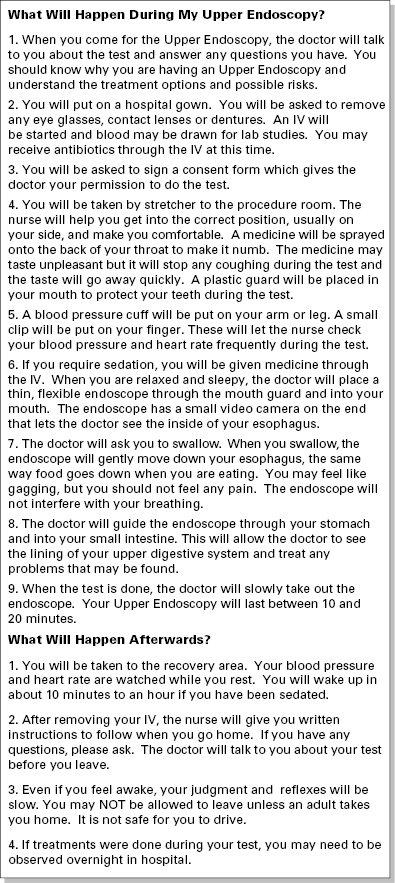The American Society of Anesthesiologists (ASA) score is used in many units to describe broad categories of fitness for procedures and sedation (Table 3.2). Many recommend anesthesia assistance for patients with ASA scores of 3 or greater.
Table 3.2 ASA (American Society of Anesthesiologists) classification—anesthesia risk classes
| Classification | Description | Example |
|---|---|---|
| Class I | Healthy patient | |
| Class II | Mild systemic disease—no functional limitations | Controlled hypertension, diabetes |
| Class III | Severe systemic disease—definite functional limitation | Brittle diabetic, frequent angina, myocardial infarction |
| Class IV | Severe systemic disease with acute, unstable symptoms | Recent myocardial infarction, congestive heart failure, acute renal failure, uncontrolled active asthma |
| Class V | Severe systemic disease with imminent risk of death |
Patient education and consent
Patients are entitled to be fully informed of the reasons why a procedure is recommended, the expected benefits, the potential risks, the limitations, and the alternatives. They also need to know exactly what will happen, and have the chance to ask questions.
Printed brochures can facilitate this education process and should be given (or sent) to patients well in advance of the procedure, so that they can be studied carefully and digested. Suitable brochures are available from national organizations, and on websites from expert centers (e.g. www.ddc.musc.edu). One example is shown in Fig 3.1. They can be adapted or developed for local conditions. Some centers use videotapes and web-based instructional materials. Patients must be given the opportunity to ask questions of the endoscopist before being invited to confirm their understanding and agreement to the procedure by signing the consent form. This document simply confirms that the patient truly understands and accepts what is being proposed, including the potential for harm.
The very simplicity and safety of upper endoscopy may tempt busy endoscopists to hurry the consent process, or to delegate it to others. That is not good medical practice, and carries medicolegal risk.
Physical preparation
Before upper endoscopy the patient should prepare by taking nothing by mouth for about 6 hours (usually overnight) and changing into a loose-fitting gown. A series of medical checks and actions to optimize the safety of the intervention are undertaken, including a general medical review, confirmation of current medication, assessment of vital signs and cardiopulmonary status, and attention to the many details concerning risks and risk reduction as detailed above. IV access should be established, preferably in the right arm or hand. Spectacles and dentures should be removed and stored safely. Consultation with a nurse is helpful with regards to adjustment of chronic medications the night before or on the morning of the procedure (e.g. insulin and antihypertensives).
Preparation for colonoscopy is covered in Chapter 6.
Monitoring
Although the endoscopist has overall responsibility, the endoscopy nurse is the practical guardian of the patient’s safety and comfort. Nursing surveillance should be supplemented with monitoring devices, at least for pulse rate, blood pressure, and oxygen saturation. Supplemental oxygen is used routinely in many units, although some argue that this may mask hypoventilation, which is better detected by monitoring of carbon dioxide (capnography). Electrocardiographic monitoring is desirable for any patient with cardiac problems, and for prolonged complex procedures. Emergency drugs and equipment must be available nearby, and the endoscopist should be trained in resuscitation and life support.
Sedation and other medications are given by the endoscopist or by the nurse under supervision. The nurse should document this process carefully, along with the patient’s vital signs, monitoring data and the patient’s response.
Medications and sedation practice
Sedation practice varies widely around the world. In many countries, most routine (diagnostic) upper endoscopy is performed without any sedation, using only pharyngeal anesthesia. Although the avoidance of sedation has obvious advantages in terms of safety and fast recovery (e.g. patients can drive themselves home), many patients in the developed world expect and receive some degree of sedation/analgesia. Chapter 7 includes some discussion of sedation in general and specifically for colonoscopy.
Conscious sedation
Stay updated, free articles. Join our Telegram channel

Full access? Get Clinical Tree











